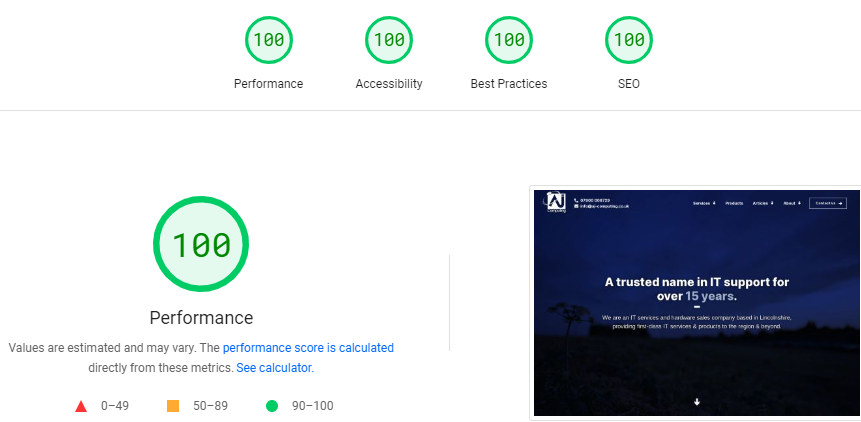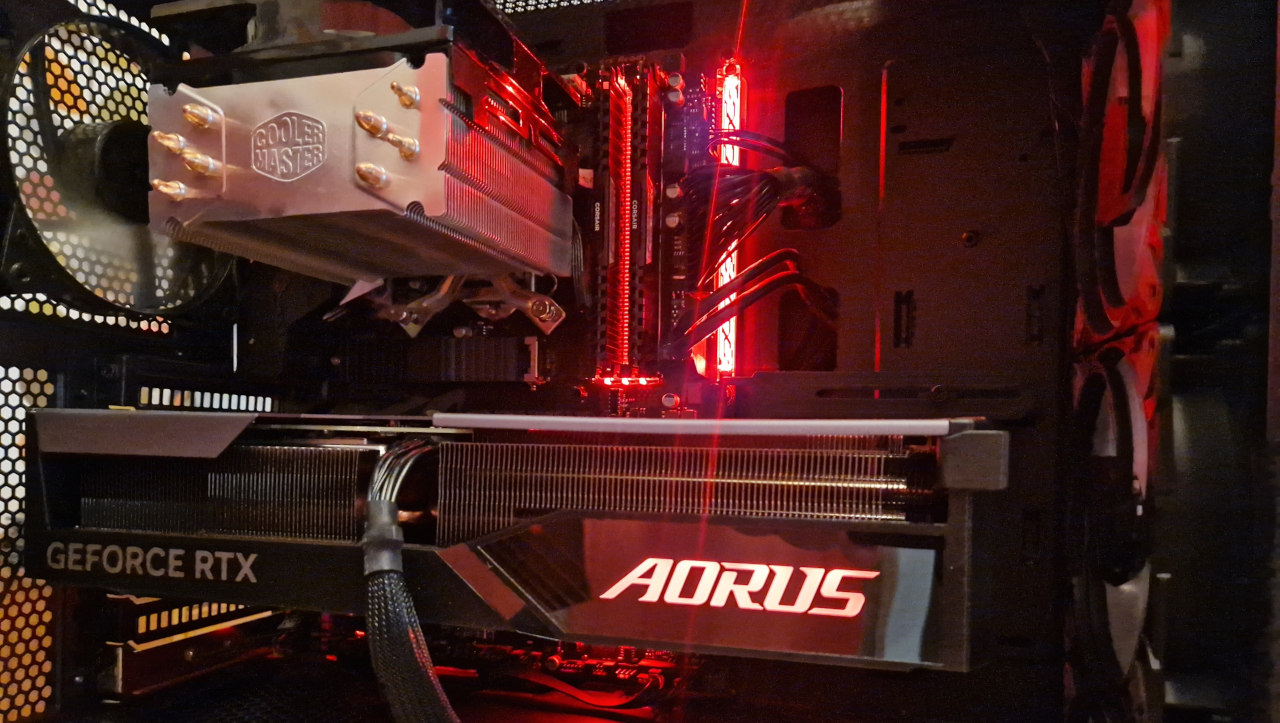Care and feeding of old laptops
Is there any point in fixing & upgrading old laptops? We think there is. (January 2021)
At AJ Computing, we are often asked whether it is worthwhile repairing & upgrading older laptops. The reasoning goes: This laptop is some number of years old. One can pick up a brand new Windows laptop or Chromebook for a few hundred pounds. In that light, is it even worth it?
Our obligatory disclaimer here is that we have a financial interest in claiming that it is; profit margins on new laptops are as miniscule as they are for any other consumer electronics, whereas our margins on labour costs are precisely 100%. But we also pride ourselves on giving our customers the best advice, even when that might cost us high-margin work.
But, it is not for entirely selfish reasons that we think that repair & upgrading is worth it more often than not.
First, repair can be much cheaper than you think. This is especially so with near-decade-old laptops; rarely are consumable parts soldered or glued in place. Thus, a professional, like AJ Computing's Alex, can have one of these apart, fixed, upgraded, cleaned and re-assembled in speed run time.
Parts are rarely difficult to obtain, and are certainly not expensive. Common failed parts like screens & batteries are available brand new for almost any laptop that is still usable today.
I disbelieve that our suppliers enjoy having these parts in their inventories. I am inclined to believe those parts are kept on inventory simply because keeping them costs less than disposing of them. Either way, the suppliers certainly do not believe they are sitting on computing's Fabergé Egg. Parts are priced for what they are: niche items that will soon have zero practical use (and non-trivial electronic waste disposal costs thereafter). They are not expensive, and rarely does finding them require much hunting.
In short: Repair is fast if you know what you are doing (we do). Parts are cheap and not necessarily hard to find. Even if you pay someone else to do it (we like money), a repair could cost far less than you think.
Secondly, older laptops can often do things better than cheap newer ones. They may not be as good-looking, depending on your taste. They will almost certainly not be as thin. Quite likely, they will be superior in ways that you'll appreciate when you have to use one every day.
Here's a fun fact: Sea otters hold hands while they sleep to stop each other drifting apart.

Here's a fact that isn't fun: as I write this in 2021 I've been using a 2011 ThinkPad X220 as my daily driver for the best part of two years now, and I think it might be the best laptop ever made. In fact, this article started as a love letter to the X220, then I realised there was a wider theme about the viability of old laptops.
But...let's do that love-letter thing really quickly. How do I love this laptop? Let me count the ways
- The keyboard rules! It is truly a desktop-class keyboard that never gets uncomfortable. It has dedicated volume and mute buttons (none of that nonsense wherein it is shared with function keys via a modifier key), dedicated keys for going back and forth in your web browser, a full-sized Enter/Backspace/right-Shift combo, and a proper PgUp/PgDn/Delete/Home/End group. And right below the keyboard, there are three dedicated individual mouse buttons (because of course it has a dedicated middle button), rather than that nonsense wherein hitting some unmarked part of your trackpad might do what you want it to.
I want to call this the best laptop keyboard of all time. It might just be, but there was that dope ThinkPad 701C butterfly keyboard thing...
- It has a TrackPoint! I know, I'm weird, but I think the TrackPoint is a vastly superior pointing device to any touchpad, if you need to work with any kind of precision and you need to sweep the entire screen. Combined with the outstanding keyboard, the ergonomics are, as was once written about the programming language ALGOL, "not only an improvement on its predecessors, but also on nearly all its successors".
- There are ports! Lots of them. There are three USB ports, one DisplayPort, a hole for an Ethernet cable, an SD card slot, some giant slot I've never used, and of course a headphone jack. No dongles required!
- It has a tiny touchpad! This is a feature, not a bug. You don't need one when you've got a TrackPoint, and a tiny touchpad means there's more room for the keyboard.
- Nobody wants to steal it! Because who wants an ancient matte black laptop which is half a foot thick? In fact, I hear that if thieves see you using an X220, they'll give you money because they feel sorry for you.
Not long after the X220 era, Lenovo, in envy of Apple, went the direction of all the other PC manufacturers, which was to attempt superficial copies of Apple laptops, perhaps with the misguided belief that anyone at all who bought an Apple computer would consider buying a laptop from anyone else.
The Wintel PC market copied everything bad about Apple - the terrible durability, the poor cooling, the lack of upgradeability, and those awful keyboards with no travel and no feel. But of course, they don't copy anything that is good about Apple, like having probably the best consumer operating system of all time, their beautiful displays, and the fact they actually just work (when you don't subject them to the tiniest hint of moisture, but that's true of all the PC manufacturers these days too).
So, back to what this article is really about, which is about whether this is worth it, and if it is, how you can make an old laptop viable so that it can accommodate modern workloads.
Here's a secret: For most people, technology has not actually moved on that much in the last 10 years. From the early 90s to about 2010 we saw massive improvements every year in computing horsepower. We have seen big gains since too, and if you're a gamer or video producer you'll understand & appreciate those gains.
But if you are using your laptop to write, to code, and to watch cat videos, the gains of the last decade are marginal, not game-changing; for those use cases, there is very little difference between a well-tuned machine from 10 years ago and a brand-new Mac or almost any new Windows machine short of hot-rod gaming laptops.
What we're getting at, is that tech from early last decade can be every bit as good as something you can buy new, with some cheap or free upgrades to your setup.
Let's talk about those upgrades!
Upgrade 1: Starve the beast!
If you are doing web browsing, which you almost unquestionably are, install uBlock Origin. It's free! You can get it for Google Chrome here and for Firefox here.
uBlock Origin is sometimes called an "ad blocker", but what it actually does is remove junk that you don't want or need, or what its author calls "wide-spectrum blocking". It will make your browsing faster, it will keep your laptop cooler, and it will also help to stop your browsing habits being tracked and traded in ways you are not allowed to understand and cannot control.
Upgrade 2: Go solid state!
Next, buy a solid state drive (SSD). This is the single most important upgrade you can make to an older machine; most usage of a PC is bottlenecked by writing to and from disk, not by CPU or RAM. Even when it is bottlenecked by RAM, the vastly faster write speeds of an SSD can help you when you head in to swap space.
SSDing the X220 makes it feel like a new machine. It'll make any computer that has a spinning-rust hard drive feel like a new machine. I recall that we did a moderately-well-specced desktop build back in 2008, that we upgraded with an SSD and a beefier cooler in 2019, and to this day boots almost instantly and works superbly.
Cost: As of early 2021 - and this will age very quickly, as storage gets cheaper every year - a good-sized SSD from a good brand can cost you less than £65 (the current Amazon cost of a 500GB Samsung EVO). You can go even cheaper than that if you don't mind a little less storage.
Upgrade 3: Max out the RAM.
Upgrading the RAM is so cheap these days that there's little reason to not do it. Crucial's "upgrade my laptop" page page is a good start, though an eBay search might be better for those on a budget.
The X220 is entirely receptive to upgrading; it doesn't even require much disassembly. The X220's RAM can be replaced with nothing more than a screwdriver. But most older laptops, even when they weren't designed to be easily upgraded, could be upgraded because they did not ordinarily have the RAM soldered to the board.
Old laptops often have an official limit to how much RAM they can take, and a real limit that hackers and tinkerers have discovered. Listen to the people who have done it, and not to the specs! For example, my X220 can only officially accept 8gb, but the excellent people who play with this sort of thing for fun have worked out that it can accept a whopping 16gb!
Cost: expect to pay about £50. If you've already got 8GB of RAM, you've already got more than enough to run a real operating system.
Upgrade 4: P-p-p-pickup a Penguin!
That is to say, ditch Windows and install Linux. It's free! I like Ubuntu Mate, because its interface is very close to the interface I first used in Ubuntu 8.04 -- an interface that I don't think anyone has improved on for getting actual stuff done rather than looking pretty (there's a theme here, isn't there?).
I've been using Linux since forever, but I'm still amazed at how blazing fast this machine is with Linux, uBlock Origin, an SSD, and a RAM upgrade. For the work I do, it's faster than my decade-newer i7 Windows laptop which I am forced to use sometimes, and has about the same battery life too. It boots in seconds and almost every program loads so close to instantly that I don't need to think about it.
As with most older hardware on Linux -- and, in fairness to Ubuntu, much modern hardware too -- everything works perfectly on the X220 on the first boot, with no fiddling.
Things I don't like about the X220
I said this article wasn't really about the X220, but it also is about the X220. And the problems below are common to many other old Windows laptops, too, so this is not just about the X220.
The TFT display that my X220 came with is bad. The low (1366x768) resolution doesn't bother me. I could even live with the comically shallow viewing angle. The colours being objectively wrong does bother me. Most ThinkPads to this day are as bad, sometimes in different ways, and this has been A Thing since the IBM days too. If you are reviving an X220 and your budget is flexible, you should certainly consider an IPS panel upgrade. I did (part number: LP125WH2(SL)(B3)). It is night-and-day different to the TFT display. It has great colours and much nicer blacks.
The built in speaker is bad. This doesn't bother me much. If I am in public, I wear headphones (please don't be that guy), and if I am at home, I have a Bluetooth soundbar nearby.
Was the hot-rod X220 worth it?
I think so. My X220 has cost me about £300 - but that includes the cost of the machine as well as purchasing the upgrades. Your upgrade will certainly cost less than that! And while I know I could buy a new laptop for that much money, ergonomics are more important to me than raw computing horsepower and infinitely more important than how closely my laptop resembles a MacBook. I now have a machine that has all the good bits of older ThinkPads and almost all the real-world performance of a brand-new machine. So, for me, this has been worth every penny.
The opinions in this article are those of an AJ Computing technical consultant & guest writer, not those of AJ Computing, and may indeed not be the views of any reasonable person at all.


